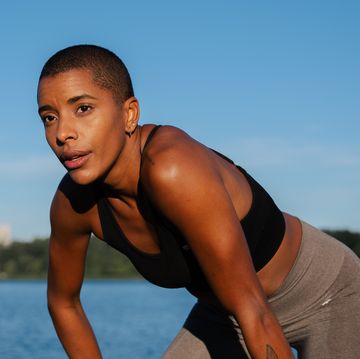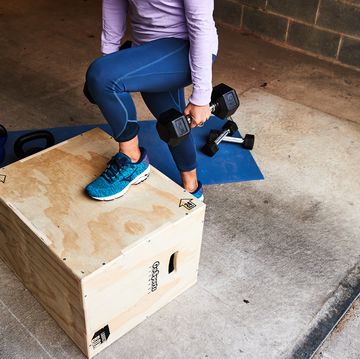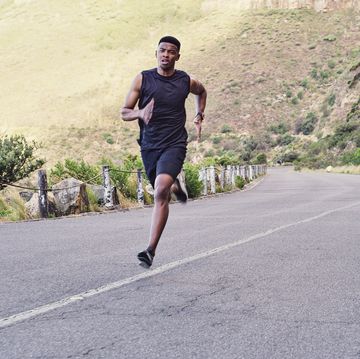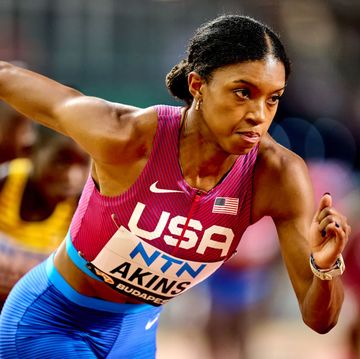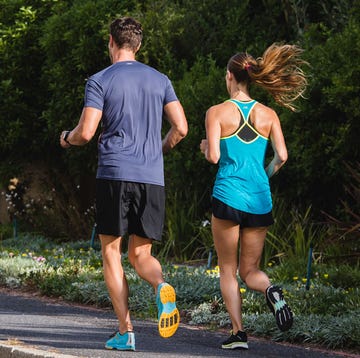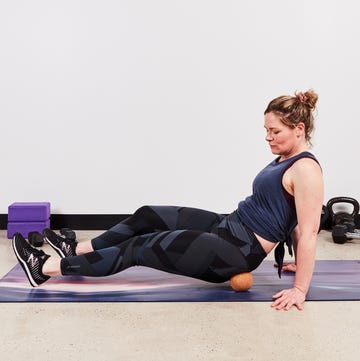Running is a unilateral movement, meaning you use just one limb at a time to continuously propel yourself forward. That’s why it’s so important for us to incorporate unilateral exercises into our regular strength-training workouts. Doing so builds strength, balance, stability, coordination, and lowers the risk for injury.
allowing hips to dip unilateral exercises Advertisement - Continue Reading Below Takia McClendon Training Tweaks That Will Get You to a BQ Best Workouts to Set Race Day Goals. Not only do they build strengthen in your legs, but they can also help you identify weaknesses that may lead to injuries down the road.
Join Runner's World+ for unlimited access to the best training tips for runners
Still, many people perform them incorrectly, so knowing how to do a lunge properly is important before banging out some quick reps during your next workout.
While lunging, improper form can cause unnecessary stress on the knee, make you feel unstable, or make the move ineffective. Common lunge mistakes McClendon sees include:
- Training Tweaks That Will Get You to a BQ
- A Part of Hearst Digital Media
- Advertisement - Continue Reading Below
To avoid these mistakes, here’s everything you need to know to do a lunge with with perfect form, plus variations you can try.
How to Do a Proper Lunge
Stand with feet hip-width apart. As you perform the exercise, be sure to engage your core and keep chest lifted, especially if you hold a weight at chest as shown. Step forward with right foot while keeping left foot in place. Bend both knees, creating a 90-degree angle with legs. Keep your right knee behind the top of right toes and tracking with the first two toes. From the side, the angle of your shin and your back should form parallel lines. Once both knees are bent to 90 degrees, and left knee hovers above floor, push off through right heel and return to standing. Repeat on the left leg.
First, mimic this movement using just body weight. Over time, you can incorporate a kettlebell (as shown) or dumbbells racked on shoulders into your routine.
Expert Tips:
The lunge requires coordination and stability, so it may take some practice to get comfortable with the pattern using body weight before adding resistance. Focus on keeping your torso upright (excessive forward lean could be a sign of tight hip flexors) and if possible, don’t let the knee past the toes of the front foot or drop too far inward, says McClendon. If your knee passes the toes but your technique is solid and you don’t feel any pain, that’s okay. “Our bodies are all different, and you will know what feels best for you,” she says
If you’re brand new to lunges, McClendon recommend starting with body weight and focusing on technique before adding dumbbells. Then, only add weights once you’re comfortable with form and ready to make the move more difficult.
How Do You Make It Easier?
“Starting with a reverse lunge is easier to learn and execute, but still offers the same benefits of the forward lunge,” McClendon says.
Start by standing tall with both feet facing forward. Take a big step back onto the ball of your right foot—keep the heel off the ground. Bend both knees until the left thigh is parallel to the ground and the right knee is hovering just above the ground, legs forming 90-degree angles. Push through the left heel to return to standing.
When you’re ready, add resistance by holding a dumbbell in each hand at your sides. If you’re working out at home, you use a towel as shown to make the move more challenging.
What are the benefits of lunges?
The Runners World Guide to Mental Health quads, hamstrings, glutes, and core—all muscle groups we rely on to run). They also help identify weaknesses that can lead to running injuries, says McClendon.
McClendon recommends runners incorporate unilateral movements into their training one to two times per week. (Other unilateral exercises runners can do include step-ups, split squats and single-leg Romanian deadlifts).
How often should you do lunges?
This will vary depending on the focus of the training program but ideally, runners should add in lunges at least once per week. McClendon recommends starting with 2 to 3 sets of 5 to 8 reps on each leg. If you are using heavier dumbbells, 5 reps per set on each leg is plenty.
What lunge variations can you do?
Once you master proper lunge form, there are tons of variations you can do, McClendon says. You can add these variations in to your workout or sub one in to your circuit in place of a regular lunge. For all variations, use body weight as you master form. Once you’re comfortable with the move, add dumbbells or kettlebells to make the move more challenging.
Walking Lunge
Stand with hands on your hips or holding dumbbells at your sides. Take a giant step forward with left leg, and bend both knees to drop right knee toward floor. Legs should form 90-degree angles. Press into left heel to rise back up to standing, then repeat with right leg. Continue to alternate walking forward, then reverse to walk back.
Side Lunge
With both feet forward, take a wide step to the left with left foot. Bend your left knee as you send hips back and shift your weight over your left foot to drop into a side lunge. Keep chest lifted and right leg straight. Return to standing. Complete reps then repeat with other leg or alternate between legs throughout.
Jump Lunge
Start in a staggered stance with right leg forward and left leg behind. Bend both knees to lower left knee to the floor and drop into a lunge position. Quickly press through right heel to jump straight up explosively and scissor legs in the air, landing with the left leg forward. Bend both knees to drop back down into a lunge and continue to repeat. You can pump your arms as you go, mimicking a running arm swing.
Curtsy Lunge
Stand with your feet shoulder-width apart, hands clasped at chest in front of you. Take a big step diagonally backward with left foot. Keeping your back straight, bend knees and lower hips toward floor until left knee is bent to about 90 degrees. Push back up to starting position. Repeat then switch legs.










